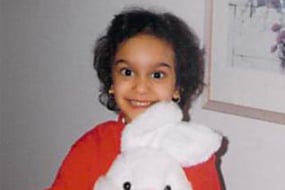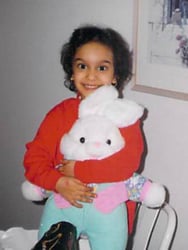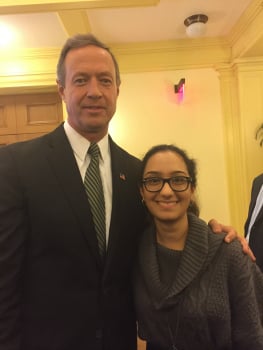
Ida's Story

 Ida Namazi is a bright, ambitious 21-year-old University of Virginia junior who dreams of attending law school and becoming a senator one day. What people might not know about Ida is that she was diagnosed with neurofibromatosis type 1 (NF1) when she was a toddler and has been battling the neurological condition her whole life.
Ida Namazi is a bright, ambitious 21-year-old University of Virginia junior who dreams of attending law school and becoming a senator one day. What people might not know about Ida is that she was diagnosed with neurofibromatosis type 1 (NF1) when she was a toddler and has been battling the neurological condition her whole life.
NF1 is a lifelong condition usually diagnosed early in life based on specific skin, ocular, and other physical findings, and genetic blood testing in select cases. The condition is characterized by changes in skin coloring (pigmentation) and the growth of tumors along nerves in the skin, brain, spinal cord, and other parts of the body.
Like in Ida’s case, NF1 can cause growth of malignant and benign brain tumors. She developed her first tumor when she was 3 years old and her second tumor when she was 9 years old. Ida underwent chemotherapy to address the tumors.
“I don’t let anything stop me from accomplishing my goals and having a normal live,” Ida says. “I’ve had a lot of obstacles because of NF1 but have confidence in my care team at Children’s National. We do what we need to do to treat my tumors as they come.”
Roger Packer, M.D., Senior Vice President of the Center for Neuroscience and Behavioral Medicine and Director of Brain Tumor Institute at Children’s National Hospital, leads the Neurofibromatosis Institute at Children’s National and is the neurologist who first diagnosed Ida.
“I’ve known Ida since she was 3 years old and have continued to treat her for the past 18 years and counting,” Dr. Packer says. “Ida is a remarkable young woman who has handled her health challenges with grace and a positive attitude.”
Dr. Packer created the standard of care for NF1 and low-grade gliomas (a type of brain tumor) 30 years ago and continues to lead the way in clinical innovation and care.
Ida’s third, and most recent, tumor was first discovered by Dr. Packer in 2014. At the time, the tumor was too small to address (smaller than 1 millimeter). But after a year of steady tumor growth Dr. Packer and his team referred Ida to the neurosurgery team to discuss her options.
New technique gives NF patients hope
Robert Keating, M.D., Chief of Neurosurgery, suggested a relatively new, minimally invasive brain surgery technique called Visualase® MRI-guided Laser Ablation. In this procedure, a small hole is made in the brain and a neurosurgeon, using an MRI as a guide, inserts a wire that heats and destroys the tumor.
Ida was the first NF patient at Children’s National to undergo this technique, which was successful and is now used on other NF patients.
After the surgery, Ida stayed overnight at Children’s National and returned home the next morning. She was back at work the next week.
“An hour after surgery, I checked on Ida and she told me she was ready to go home and feeling great,” Dr. Keating recalls. “This was our ideal outcome for her and shows how resilient she is. This technique is the most minimally invasive option out there today for brain surgery.”
“Brain surgery is always going to be a big deal, but the fact I was home the next day is amazing,” Ida says. “I was ready to go back to work that next day too, but my parents made me stay home and rest. The choice to have this surgery was the right one for me, and I was impressed with my speedy recovery.”
Her care team at Children’s National agrees: “I have no doubt that Ida will go on to have a completely normal and successful life,” Dr. Keating says. “Despite her condition, she’s already accomplished a lot for her age and I can’t wait to see what else she does.”
“Ida can do anything she puts her mind to. She’s an amazing young woman and we expect to see her do incredible things with her life,” says Dr. Packer.
While there currently is no cure for NF1, effective medical care includes preventing or minimizing deformities and maximizing the child's capabilities. There also are new agents being tested that may control or reverse some of the complications of NF1, and the Institute is a leader in developing and testing such therapy, through its clinical trials.





